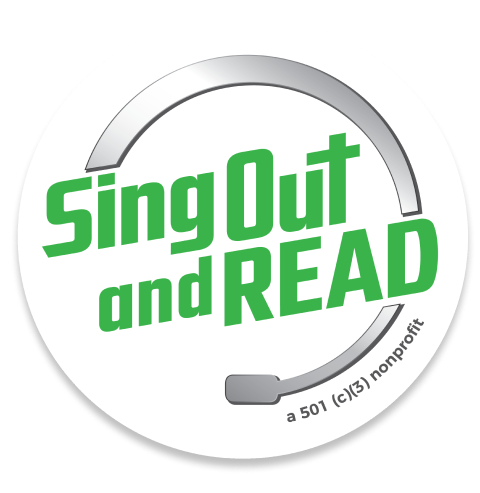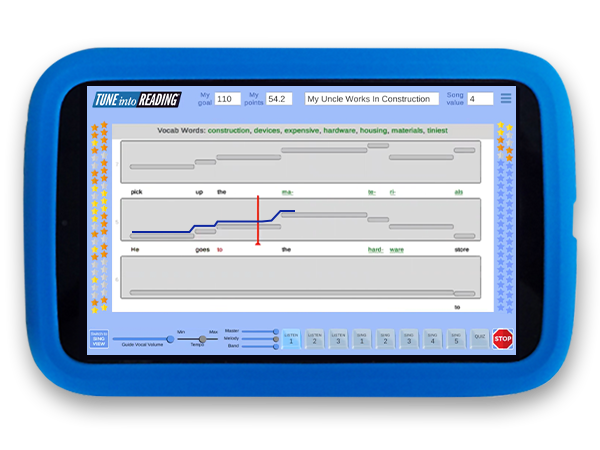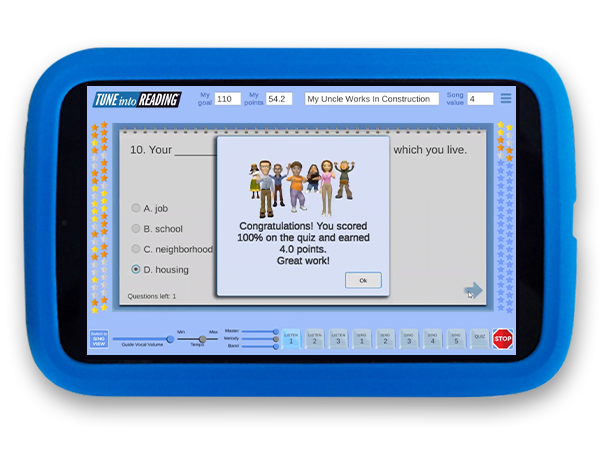Sing Out and READ Uses Music, Song Lyrics to Improve Reading Skills
Is that kid belting out Twinkle, Twinkle Little Star entertaining everyone in earshot or learning to read? If he’s holding a Sing Out and READ tablet, the answer is both.Sing Out and READ is closing the reading gap in Tampa, St. Petersburg, and the Bay Area one student (and one song) at a time. And during this pandemic age of digital learning, the virtual program it provides that combines song with reading skills hasn’t needed to pivot.
“When COVID hit, we already had the tablets, so we were able to expand quickly,” says Sing Out and READ Founder Carlo Franzblau of Tampa, who has an MBA from Harvard Business School in Boston.
A total of 175 families participated in the research-based and child-approved curriculum during the Summer of 2020, and that number is growing. Comprised of eight grade levels and 20 lessons per level, the sing-to-read software that doubles as a game efficiently increases comprehension and reading prowess. Three months of use is all it takes for a child using the program as directed to gain an entire year’s reading level. What’s more, it’s fun. Many kids do more than the recommended three lessons each week.
The program is addicting, Franzblau says, in the best meaning of the word.
HOW IT WORKS:The child is asked to sing a song, determining her or his vocal range
It’s time for song selection! Songs will play three times before the child has a chance to sing along. The lyrics are visible throughout, and ‘words to know’ are highlighted
It’s time to sing while reading the words on the screen during the performance. Points are given for completing the song and earning at least 80% on the following quiz
If this approach sounds rooted in karaoke, that’s because it is. Franzblau originally developed his Tune in to Reading software in 2006 to help singers solve vocal pitch problems. It presented an advantageous side effect: It helped kids read. He launched the program and sold it to schools for the next 13 years before founding the nonprofit Sing Out and READ in 2019. Now, the technology goes wherever the child is: the car, home, and everywhere in between. Tablets are equipped with cellular technology and the program is pre-loaded.
“We even give kids their own tablet once they complete the program,” Franzblau says. “That way, we’re also helping to erase the digital divide.”
Sing Out and READ, a nonprofit based in the Westshore area of Tampa, aims to help at-risk youth through its Family Literacy Project (FLiP), providing the tablet free of charge as well as a coordinator to gauge individual progress. Those who complete 900 minutes of instruction receive the award tablet to keep. Students who qualify for free or reduced-price lunch are eligible for FLiP and there is a small waiting list. The nonprofit organization welcomes donations and hopes to keep expanding. The program is available for sale for those who do not qualify for the free service.
During the summer, the nonprofit secured funding and partnered with the Urban League with the aim to help children within public housing. They had been meeting every two weeks when the pandemic hit. Thanks to the virtual nature of Sing Out and READ, participating students at schools like Campbell Park Elementary and Beaver Creek Elementary still received the help they needed to stay on track even as schools shuttered.
“Children learning to read through music learn to raise their voice with inflection, to stop at periods, and to welcome repetition,” Franzblau says. “Both sides of the brain are activated by music!”




